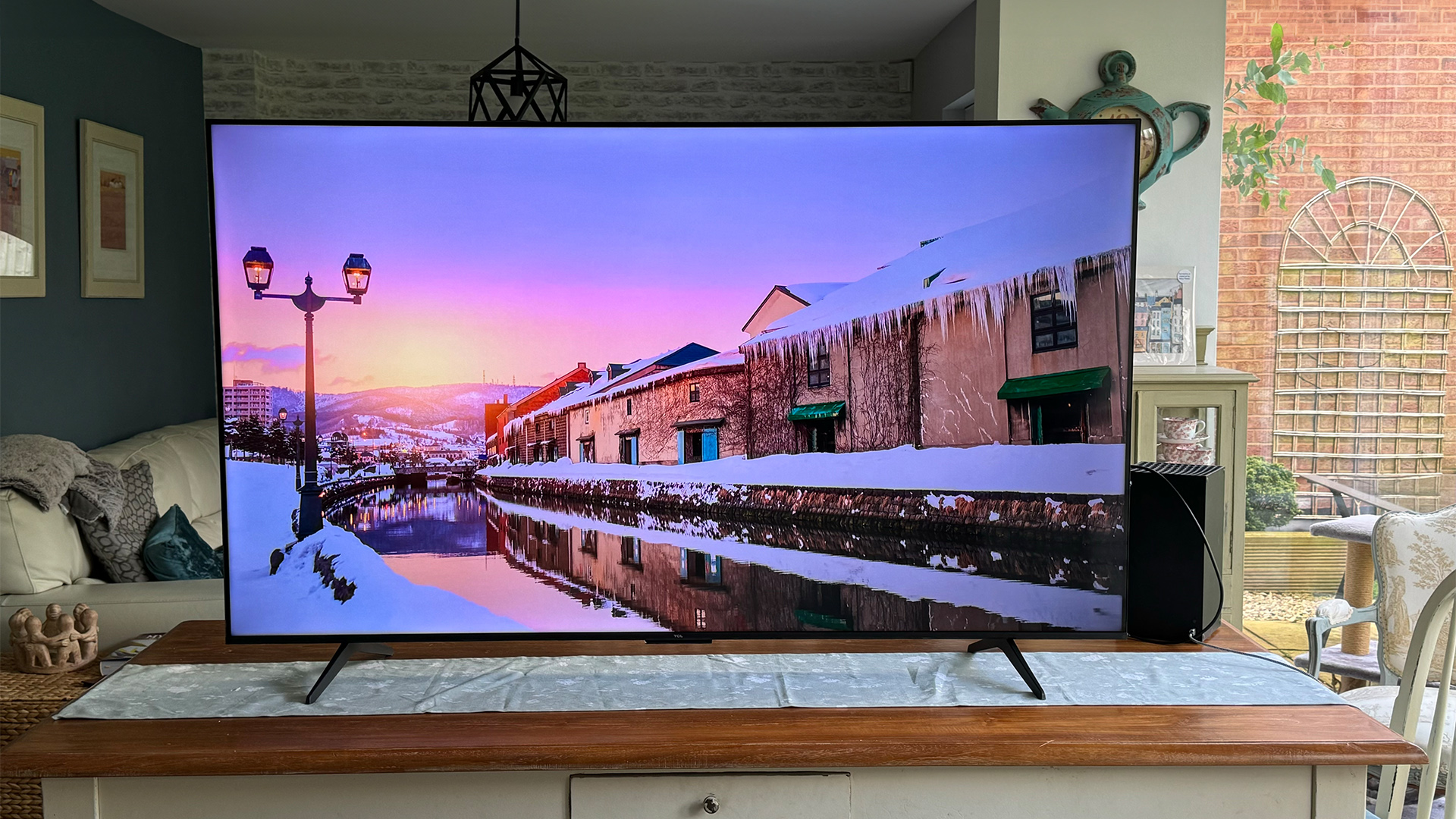What Hi-Fi? Verdict
While it doesn’t particularly stand out from the crowd in performance terms, the TCL P755K’s crazy price makes it well worth considering
Pros
- +
Incredibly cheap for a 65-inch TV
- +
Comprehensive HDR support
- +
Good gaming support for the money
Cons
- -
Dolby Vision bug with external sources
- -
Motion can look soft with 24p
- -
Sound lacks weight
Why you can trust What Hi-Fi?
TCL has established a very likeable habit over the past couple of years of basically rewriting the TV value rulebook in both performance and feature terms. This trend looks at first glance as if it’s set to continue – with knobs on – with the 65P755K, which is a 65-inch TV with premium gaming features, Google TV smarts and comprehensive HDR support for the frankly mind-bending price of just £468. Surely it can’t actually be any good for so little money, can it?
Price

To say that the price is the star attraction of the 65P755K would be the understatement of all understatements. Even if this TCL TV had the most basic specifications imaginable, its £468 UK price would still look crazily cheap for a 65-inch TV. But the 65P755K doesn’t have the most basic specifications imaginable. As we’ll see later, it actually boasts a promisingly premium panel setup and a feature list long enough to qualify it more as a mid-range set than a budget one.
As is often the case with TCL, which carries different ranges in different territories, the 65P755K is not available outside Europe.
Design
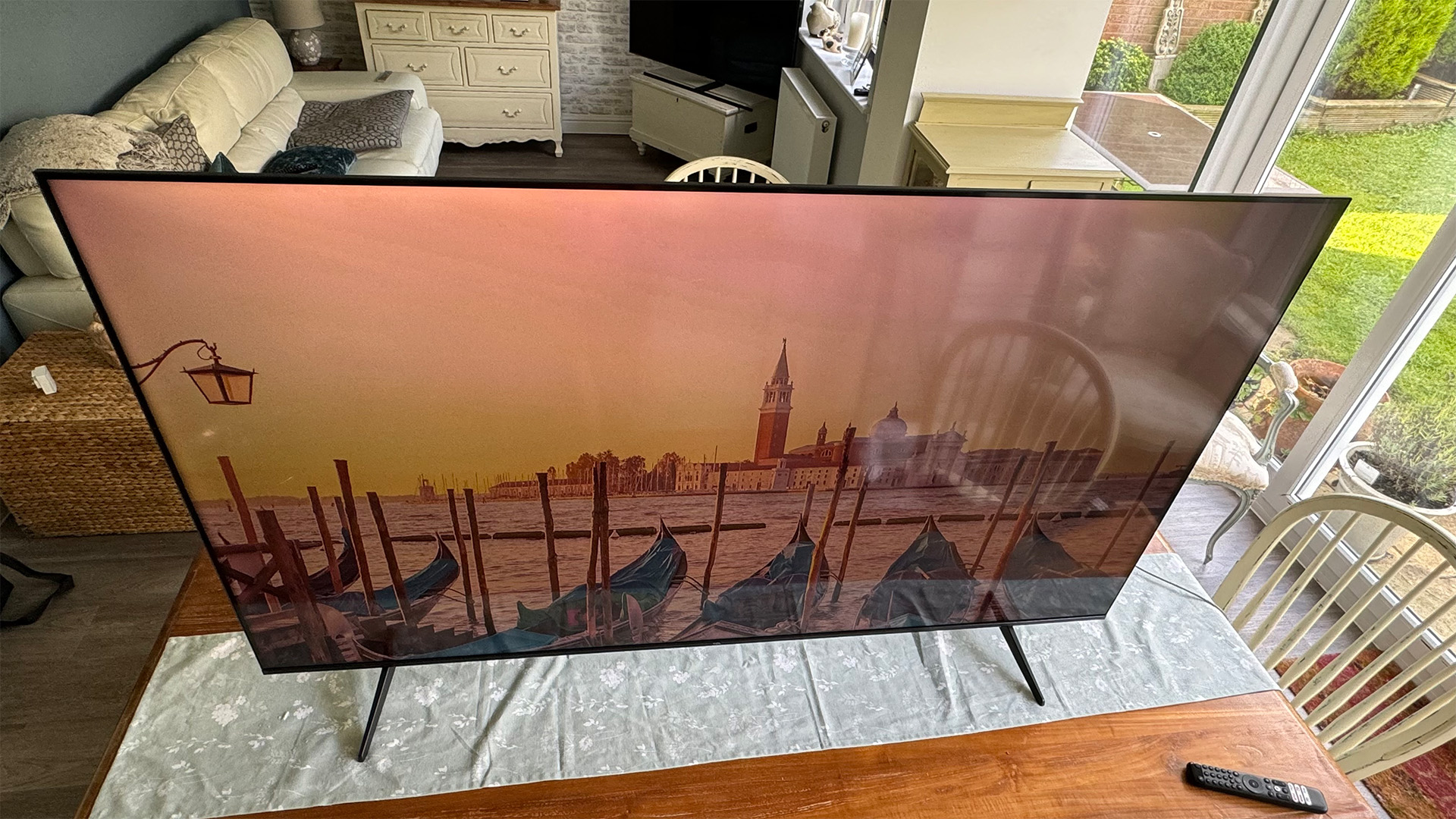
The P755K looks a touch cheap and cheerful. The frame around the screen is at more or less regulation width by today’s standards, but despite sporting a mild metallic sheen, it still looks and feels rather plasticky. The two feet it sits on are about as basic – and plastic again – as could be, too.
The screen is relatively svelte around the back for a budget direct-lit LCD model, though, despite some grilled areas of the rear panel suggesting that TCL has had a go at fitting its TV with a decently powerful speaker system. That said, there’s no sign of the sort of large, rear-mounted subwoofer found on models higher up TCL’s TV range.
The P755K ships with a serviceable remote control. Its long and thin design feels comfortable in your hand, and while its finish is plasticky it’s reasonably weighty and well laid out.
Features
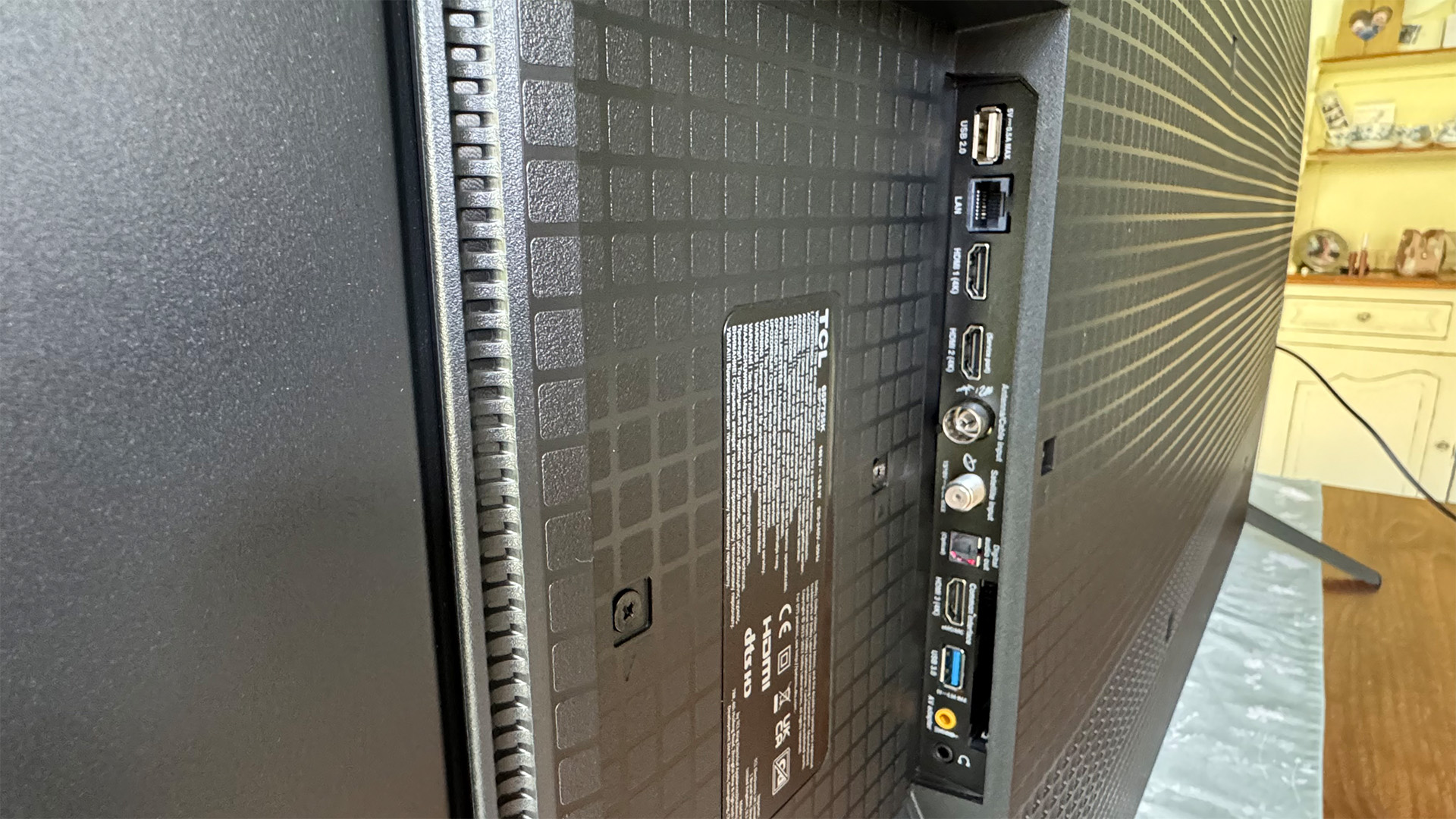
The TCL P755K is so cheap for a 65-inch TV that its price classes as a key feature. But that’s far from the only interesting trick it has up its sleeve.
Its 4K-resolution panel specification is unexpectedly promising, for starters, thanks to its use of a VA rather than IPS panel and direct LED lighting. VA panels usually deliver better contrast than IPS ones (at the expense, typically, of narrower viewing angles), while putting the LEDs directly behind the screen rather than around its edges typically helps a TV achieve more control over its light even when, as in the 65P755K’s case, there’s no local dimming system in play.
The screen doesn’t carry a Quantum Dot colour system, but it’s still a wide gamut panel that TCL reckons can cover as much as 95 per cent of the DCI P3 colour spectrum typically used in high dynamic range mastering. It also, excellently, supports all four of the main HDR formats: HLG, HDR10, HDR10+ and Dolby Vision. Many premium TVs, including those from Sony, Samsung and LG, still only cater for three of the four HDR formats.
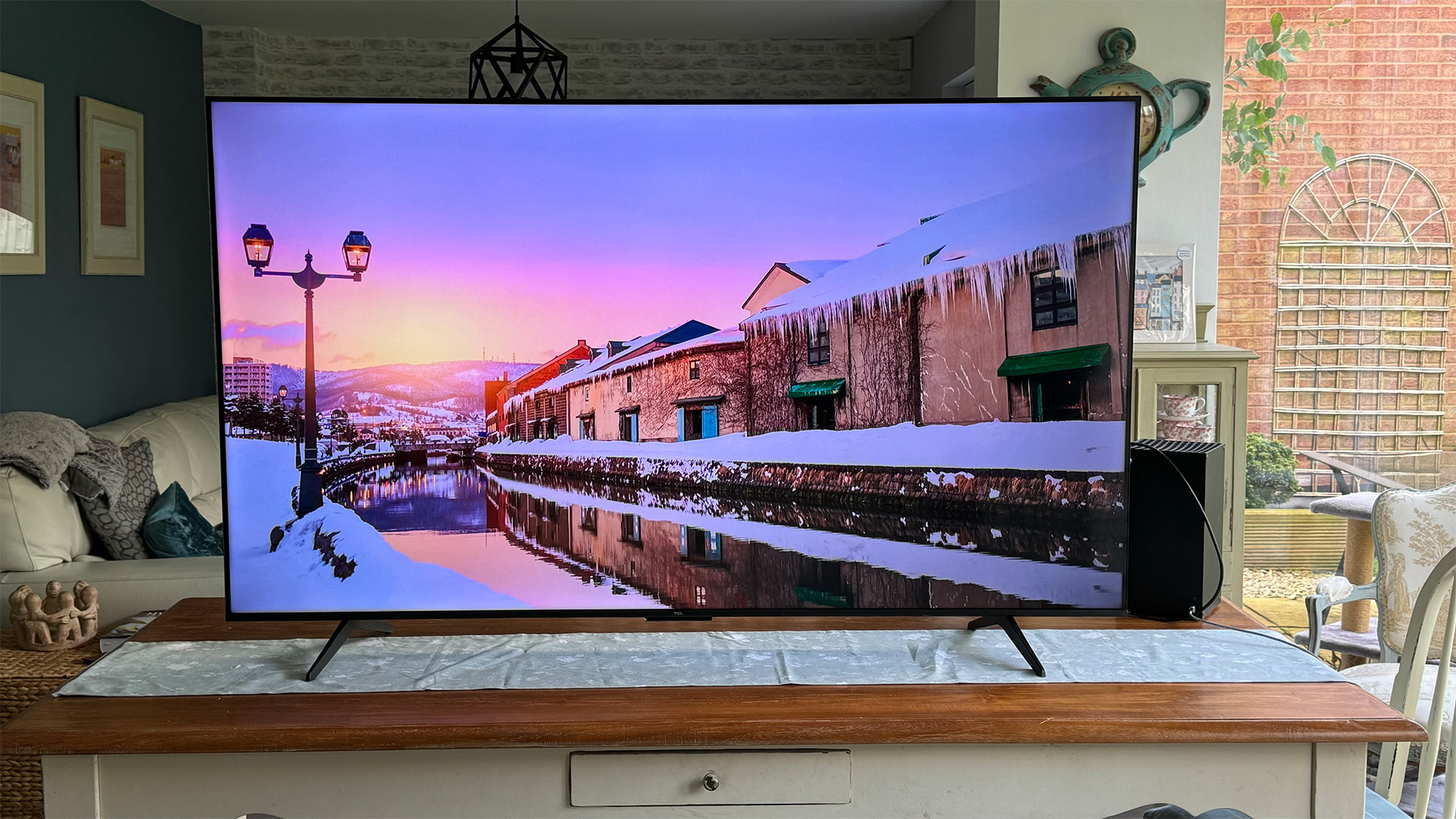
Screen size 65 inches (also available in 43in, 50in, 55in, 75in)
Type LCD
Backlight Full Array LED
Resolution 4K
HDR formats HLG, HDR10, HDR10+, Dolby Vision
Operating system Android TV
HDMI inputs x 3
Gaming features VRR, ALLM, Dolby Vision gaming
Input lag at 60Hz 9.7ms
ARC/eARC eARC
Optical output? Yes
Dimensions (hwd, without stand) 83 x 145 x 7.2cm
The Dolby Vision support even extends to a Dolby Vision game picture mode, so that owners of Xbox Series X consoles or Dolby Vision-capable PCs can play in Dolby Vision without suffering high levels of input lag. In fact, the P755K’s Game modes get the time the screen takes to render graphics down to an extremely rapid 9.7ms.
We’re not done with the P755K’s gaming features, either. Thanks to TCL’s Game Accelerator technology, for instance, it claims to support refresh rates up to 120Hz. Though to be clear, the panel is only 60Hz natively; the Game Accelerator uses so-called Dual Line Gate technology to achieve 120Hz – an approach that involves reducing the image’s resolution. According to our Xbox Series X’s display assessment screen, with the 120Hz DLG option selected on the P755K, the supported resolution if you choose 120Hz playback from your Xbox menu reduces to 1440p.
You can call up a dedicated Game Bar menu screen when gaming, too, which gives you information on the gaming signal the TV’s receiving as well as access to a small selection of gaming assistants. These include an onscreen target reticle, a shadow enhancement feature for raising the brightness of dark picture areas to make it easier to spot lurking enemies, and a choice of game genre presets. There’s VRR support, too.
The P755K’s connections include three HDMIs, one of which supports HDMI eARC for shipping sound out from the TV to compatible soundbars and AVRs, and all of which support 4K HDR 60Hz gaming (or 1440p 120Hz gaming using the Dual Line Gate technology). Elsewhere there’s a pair of powered USB ports, satellite and aerial inputs, a LAN port, an optical digital audio output, and a headphone jack. Plus there’s support for Wi-Fi 5 and Bluetooth 5.0 wireless streaming.
Surprisingly for such an affordable TV, the P755K carries a fairly serious processing brain capable of working across multiple picture performance areas. The AiPQ processor is actually responsible for the non-native 120Hz capabilities, but also claims to apply AI machine learning know-how to improve clarity, colour (retuning colours based on volume, saturation and contrast, among other things, to allegedly make them look more realistic), motion, HDR tone mapping (to adapt HDR10 to the screen’s capabilities), and contrast.
Last but not least on the P755K’s surprisingly lengthy feature list is an Android TV smart system. This delivers all the streaming features and apps usually associated with Android TV, in the usual attractive if rather dictatorial menu system. Unlike TCL’s previous generation of TVs, though, the P755K has a nice extra for the UK in the shape of a Freeview Play app. This brings all of the UK’s main terrestrial broadcaster catch-up apps together in one easy-to-browse place – and solves Google’s current issues with not carrying the BBC iPlayer or All4 apps.
Picture
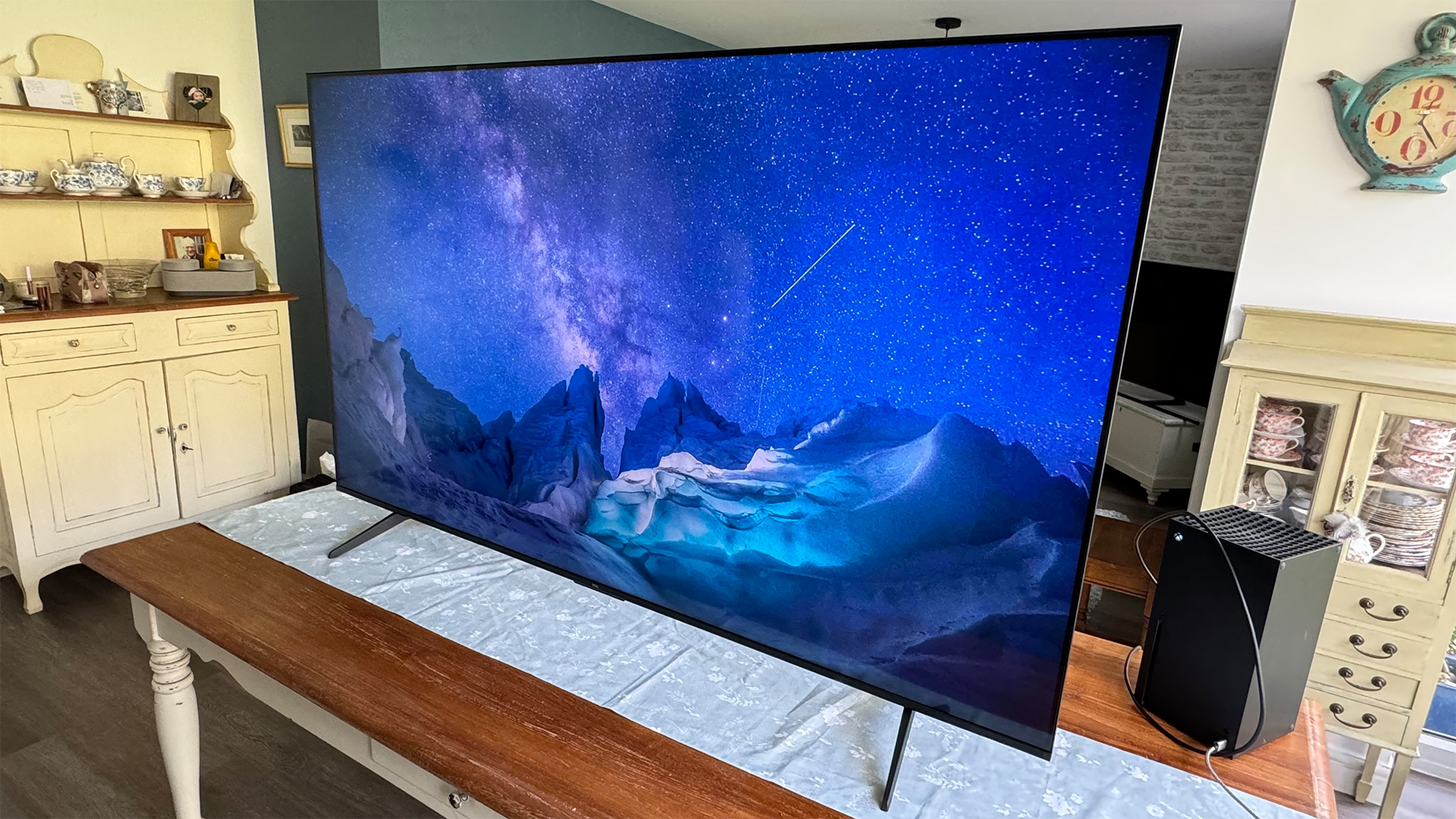
The 65P755K doesn't stand out so much from the competition as some of TCL’s step-up TVs have over the past 12 months. That’s not to say, though, that it’s not still interesting to anyone who thought they didn’t have a prayer of getting a well-featured 65-inch TV for under £500.
The most unexpected strength of the P755K’s pictures is their colour. Despite not using Quantum Dots, tones across the board look surprisingly vibrant – yet not to a degree that looks unnatural or gaudy. Maybe even more surprisingly for such a cheap TV, the engaging vibrancy doesn’t come at the expense of subtle shading, blending and tonal control. So colours tend to look balanced and natural, and they contribute to a good sense of solidity and depth.
Native 4K sources look quite sharp and detailed for such a cheap 4K TV too, without telltale signs such as ghosted object edges and exaggerated grain that might suggest that the sharpness is being conjured up by the AiPQ processing rather than being native to the TV.
According to TCL’s own specifications, the P755K only delivers a typical brightness of 350 nits. This really isn’t much for an HDR-capable TV. While this does mean that HDR pictures look a little duller on the P755K than we’d ideally like, though, especially with HDR10 sources, thanks to some thoughtful tone mapping the TCL set does manage to to deliver the brightest highlights of HDR pictures without them looking ‘whited out’ or scrubbed of detail and shading. You can turn the tone mapping off if you want the picture to look a little brighter, but the less controlled feel of the resulting pictures ultimately throws up more distractions than the slightly darker, tone mapped picture does.

On more premium, natively brighter TVs, activating tone mapping typically delivers a more dynamic-looking picture, rather than the dimmer one the P755K delivers. But TCL has clearly decided that, in the context of the limited light available to the P755K, retaining as much HDR picture information as possible is better than trying to push the TV to uncomfortable places only to achieve less immersive results. And for the most part, we’re on board with that decision, especially in dark room conditions. The only rider would be that if you’re looking for a TV for a really bright room, the 65P755K probably isn’t it. In that case, if £500 is your budget, you might be better dropping down to a brighter 55-inch alternative.
The inevitable signs of the P755K’s budget nature kick off with a bug with Dolby Vision playback over HDMI. Bizarrely, if a Dolby Vision sequence features a cut between light and dark shots, you can clearly see the image adjust its brightness up or down to accommodate whatever is coming next before the cut actually happens. This is so distracting that it makes external Dolby Vision sources pretty much unwatchable at times.
Fortunately for P755K buyers (and the TV’s final review score), the premature brightness adjustment issue is not repeated when streaming in Dolby Vision from any of the TV’s built-in apps. Which will likely be by far the most common Dolby Vision source for most modern households.
The P755K doesn’t deliver dark scenes as effectively as we might have hoped with a VA type of LCD panel and direct LED lighting. There’s a mild pall of greyness over any night-time or dark interior sequences, and if there’s a full fade to black the TV completely turns off its backlighting before turning it back on again when the picture returns. A choice that might deliver fade-to-blacks with almost complete blackness, but also makes you distractingly aware of the TV’s backlighting mechanisms.
Black levels are a little better with Dolby Vision sources, thanks presumably to the P755K being able to use the extra scene-by-scene picture information provided by the DV master. It’s a relief, too, to see plenty of shadow details surviving both the screen’s slight grey overwash and lack of brightness. But don’t expect the sort of relative contrast prowess we’ve come to expect from TCL’s more premium TVs.
Having mentioned Dolby Vision, we recommend not using the Dolby Vision Bright option, as it introduces both noise reduction and motion smoothing processing that leaves the picture looking soft and unnatural. The Dolby Vision Dark mode makes colours look a little less vibrant, but it’s a cleaner, crisper, more natural picture overall, so stick with that one.
Finally, motion on the 65P755K looks a little soft and reduced in resolution even with the TV’s motion processing system in play – though an awkwardly named Nature Cinema option does a solid job of at least reducing judder without causing major soap opera effect with 24p films.
Sound

As with its pictures, the TCL P755K’s sound doesn’t stand out from the crowd as much as the sound of the brand’s premium TVs. Its biggest limitation is that, without an integrated subwoofer to help it out, it struggles to deliver any bass worthy of the name. Deep bass drops and rumbles in movie soundtracks sound thin and feeble, almost as if they’re coming from a different room.
The sound can’t get particularly loud even at maximum volume, either, high pitched sounds can become a bit harsh, and there’s also a lack of projection either forward or sideways that prevents the sound from ever becoming really involving.
It’s not all bad news, though. The sound might get a bit thin under pressure, but it doesn’t tend to cause distortions, crackles or chassis buzzing other than during the most extreme Hollywood moments. Also, especially with Dolby Atmos soundtracks, the set manages to place sound effects, including voices, quite accurately within the space of the screen, creating a fairly busy sense of detail that compensates to some extent for the lack of forward projection.
Verdict

If you were hoping for the same sort of rip-roaring rewriting of the TV value rulebook from this crazily cheap 65-inch that TCL has delivered recently with its more premium TVs, the P755K doesn’t deliver. At the same time, though, while it might not be a bona fide budget classic, the 65P755K is still good enough and, especially, richly featured enough to make it easily worth every penny of its eye-wideningly slight asking price.
SCORES
- Picture 4
- Sound 3
- Features 4
MORE:
Read our review of the TCL 55C745K
Also consider the Amazon Fire TV Omni QL50F601
Read our Samsung 55CU8000 review
Best TVs: flagship OLEDs and affordable flatscreens tried and tested
John Archer has written about TVs, projectors and other AV gear for, terrifyingly, nearly 30 years. Having started out with a brief but fun stint at Amiga Action magazine and then another brief, rather less fun stint working for Hansard in the Houses Of Parliament, he finally got into writing about AV kit properly at What Video and Home Cinema Choice magazines, eventually becoming Deputy Editor at the latter, before going freelance. As a freelancer John has covered AV technology for just about every tech magazine and website going, including Forbes, T3, TechRadar and Trusted Reviews. When not testing AV gear, John can usually be found gaming far more than is healthy for a middle-aged man, or at the gym trying and failing to make up for the amount of time he spends staring at screens.
